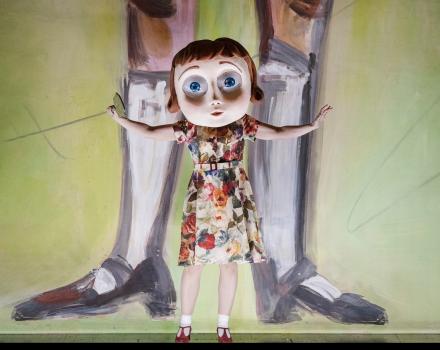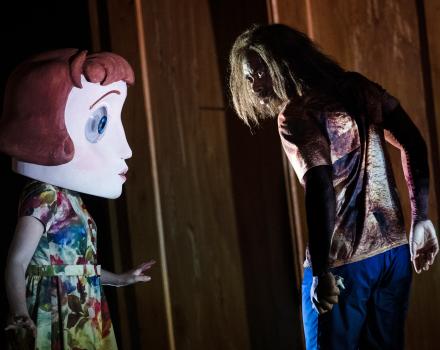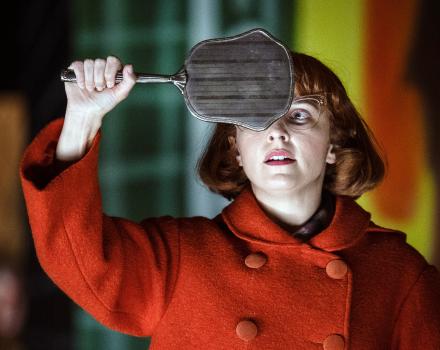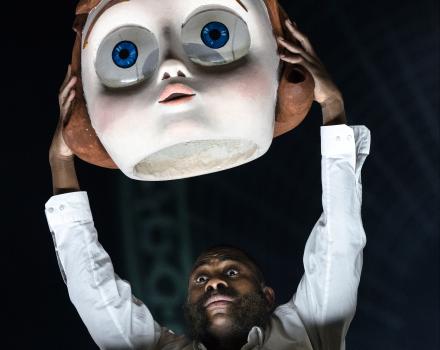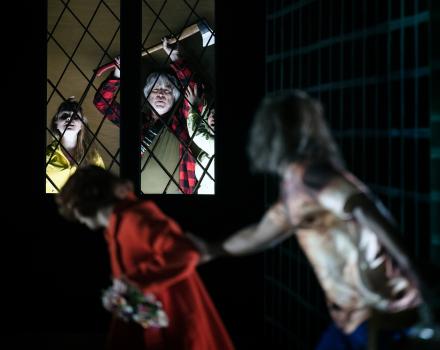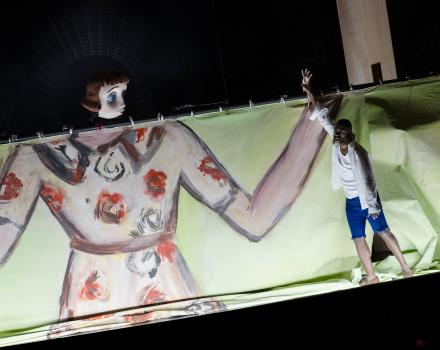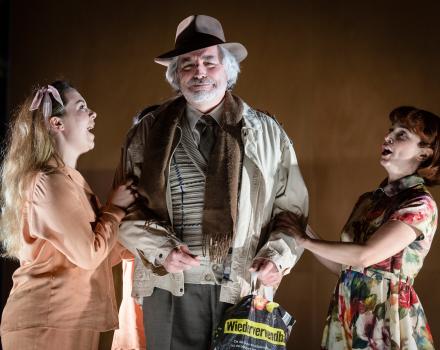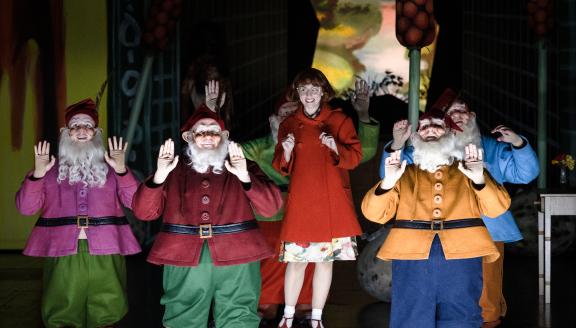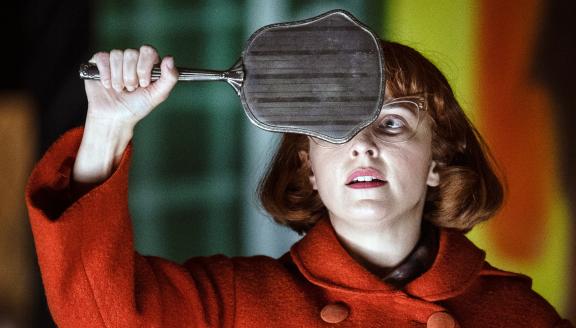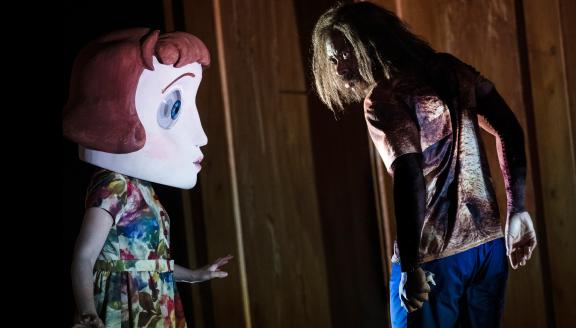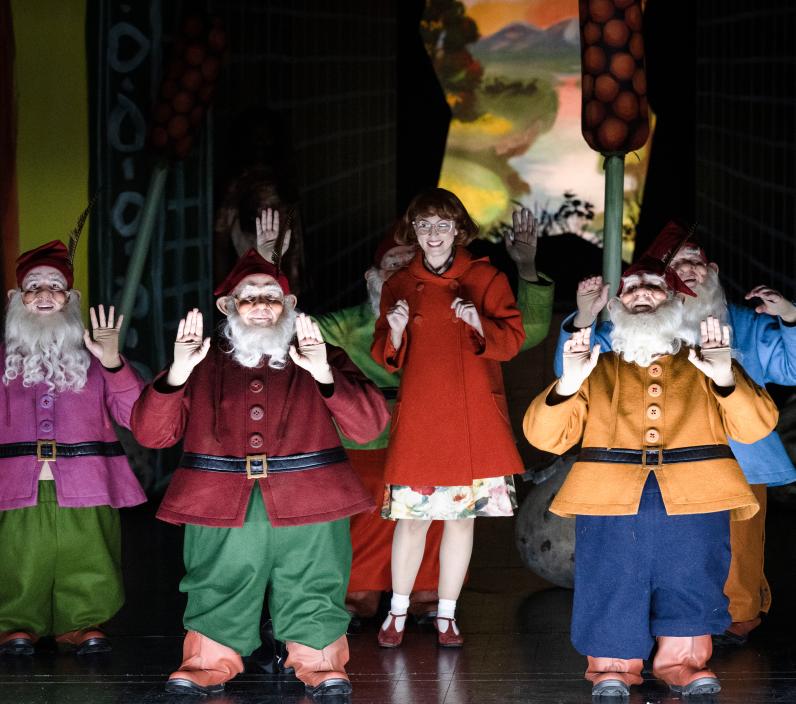
In a lonely palace lives Prince Azor who has been transformed by a vengeful fairy into a beastlike form. When a foreign merchant disturbs the palace peace, the creature-occupant demands a human sacrifice as punishment. Zemira, the merchant’s daughter, is ready to give her life but soon discovers Azor's beastly form hides an altogether different soul. Will love save the day?
Beauty and the Beast needs little introduction. Here the magical fairytale finds the form of an entertaining comedy by the Belgian-French composer André Grétry which premiered in Fontainebleau in 1771 with arias, a ballet and spoken dialogue that quickly conquered audiences far and wide. The version that had its first performance at the Mannheim Court Opera in 1776 was the first Italian translation of the opera, which replaced all spoken dialogue with recitatives. Now the Nationaltheater Mannheim’s new production of Zemira e Azor takes to the stage of the historic Schlosstheater Schwetzingen built in 1753. Conductor Bernhard Forck and the Akademie für Alte Musik Berlin join forces with director, set and costume designer Nigel Lowery to breathe new life into this enchanting work.
CAST
|
Zemira
|
Amelia Scicolone
|
|---|---|
|
Azor
|
Patrick Kabongo
|
|
Ali
|
Raphael Wittmer
|
|
Sandro
|
Thomas Berau
|
|
Fatima
|
Seunghee Kho
|
|
Lesbia
|
Maria Polańska
|
|
Orchestra
|
Akademie für Alte Musik Berlin
|
|
Extras
|
Astrid Friedrich
Alex Zivkovic
Andreas Eichhorn
Uwe Herbstmeier
Thomas Mahlert
Louis Neuhierl
Christian Schepke
Martina Haimerl (Lead)
|
| ... | |
|
Music
|
André-Erneste-Modeste Grétry
Ignaz Holzbauer
Niccolò Jommelli
|
|---|---|
|
Text
|
Jean-François Marmontel
Mattia Verazi
|
|
Conductor
|
Bernhard Forck
|
|
Director / Sets and costumes
|
Nigel Lowery
|
|
Lighting
|
Lothar Baumgarte
|
|
Dramaturg
|
Xavier Zuber
|
| ... | |
In cooperation with Schwetzinger SWR Festspiele and Forschungszentrum Hof │Musik │ Stadt
VIDEOS
Story
FIRST PART
Sandro, a merchant and father of three daughters, is shipwrecked in a storm and loses all his possessions. With his servant Ali, he is stranded in a foreign place where both find refuge in an enchanted castle. Due to excessive drinking Ali feels sleepy and his master urges him to leave in vain. Sandro betrays the hospitality he has just found when he tries to steal a red rose as a souvenir for his daughter Zemira. Suddenly the terrifying lord of the castle, Azor appears and wants to kill Sandro for stealing the rose. When Sandro tries to justify himself and explains that he only wanted to fulfill his daughter's wish by taking the rose, Azor remains angry but offers a pact: he will spare Sandro if he gives him one of his daughters as a wife. If Sandro betrays him, Azor will take revenge on him; if Sandro keeps the pact, Azor will reward him richly. After some hesitation, Sandro agrees and receives the rose as a token of their agreement.
Brought home by a magic cloud, Sandro tells his daughters that he has lost everything. Zemira, the eldest of the daughters, tries to comfort him, stressing that the happiness of the family stands above any material concerns. She sings about the rose Sandro brought her, not knowing what it cost him. Ali cannot bear Zemira's distress at her father’s sadness and tells her about the pact with the beast Azor. Sandro must make a decision. Sandro writes a farewell letter to his daughters and wants to break the agreement with Azor. He prefers to die than lose Zemira. The latter, however, is now privy to the entanglements through Ali and cannot simply accept her father's death. She is resolved to travel to Azor.
SECOND PART
In his palace, Azor laments his ugly appearance with which he has been condemned by a fairy. It would suffice for a maiden to recognise his true core and his inner gentleness for the curse to be lifted. Led to Azor's home by Ali, Zemira is enraptured by the palace's interior. She alone holds the fate of her father and the family in her hands, a fact that gives her strength to overcome her fear of the unknown. She realises that Azor is not evil, as his voice sounds gentle and pleasant. She expresses her wish to see her family and Azor shows her an image of her sisters and father in a magical spell. Out of concern for her father, she wants to return to her family. Azor trusts her. He gives Zemira a magic ring that frees her from him; if she throws it away, she will return to him. Zemira swears to return to Azor before sunset, otherwise he will die of loneliness.
When Zemira is back with her family, she tells them of Azor's kindness, his human feelings and his loving nature. But Sandro is not convinced and wants to keep Zemira away from the island and the supposed monster. Zemira leaves her family and her father gives her up as lost. Meanwhile, the love-struck Azor is determined to put an end to his lonely existence, as he believes that Zemira will never come back. But she keeps her word, and in the face of such devotion and loyalty as well as the confession of love, the fairy’s spell is lifted and he reveals himself in his natural and beautiful form. Zemira is delighted, but one thing is still important to her: the wellbeing of her family. Her father Sandro appears with his other daughters and gives their love his fatherly blessing. The bride and groom sing about the sufferings and joys of love. They promise not to seek out anyone else and to make each other happy. The others join in the jubilation. Faithfulness, truth and honesty prevail.
Insights
Beauty and the Beast revisited
Interview with Nigel Lowery and Bernhard Forck by dramaturg Xavier Zuber.
Nigel, what are your plans for Zemira e Azor - or Beauty and the Beast - in Schwetzingen?
Nigel Lowery: Zemira e Azor is a fairy tale story, as we all know. It must be the first opera on this subject, because Madame de Villeneuve had only written it 30 years before the opera was first performed. What interests me is the fairy tale and an analysis of what it represents. Fairy tales and fairy stories are always about rites of passage, they are about a child entering adulthood. That then also means a transition from a childish self, where everything revolves around 'me', to an adaptation of the psyche to society. In this case it is Zemira, but it is also Azor because he is cursed by the evil fairy in this play. The fairy, in cursing Azor, acts similar to a mother not giving her child what it wants. Azor has almost gone through this process of adjustment, but he still has not quite learned that he has to suppress his sexual or bestial urges, his libido. So both of them – Zemira and Azor – are on this journey.
Is it a story of a sexual awakening?
Yes, a spring awakening! In traditional fairy tales where there is a father and three daughters at the centre, the other two daughters usually have a negative influence. But in this case, Fatima and Lesbia are actually still young girls who are yet to embark on the journey that Zemira is taking. In other words, they are very childish.
Did you have any baroque elements in mind for your staging of the opera?
NL: I design very visually and with different images. So there are remnants of a baroque 'Kulissentheater', which was originally also very popular with the audience. But of course we give this special Mannheim version here. In this Mannheim version there are four numbers by Jommelli that were written much earlier and come much more directly from the world of ‘opera seria’. It does not always quite fit together, but it is interesting. So there is this residue of baroque elements that cross over into a classical sphere.
And what can the audience expect in terms of design?
I also try to visually reflect this kind of transition. So we start in a kind of wooden parlour, the way you would imagine a poor family. But as the play goes on, it becomes more contemporary and something we know from our own lives. So there is a motorway, there is a football stadium at the end....
And you also include an element from Schwetzingen?
NL: Yes, I am also trying to incorporate some very immediate elements from the palace garden in Schwetzingen. There I am concerned with the solitary world of Azor, where he has been enchanted. So you have to imagine that as being as far away from society as possible. And this element, the ‘end of the world’ in the Schwetzingen palace garden, seems to me to be the right reference for this. And so I also use this as a visual element in my stage design.
‘The end of the world’ - what does that mean to you?
NL: It is a very solitary place and it is about Azor's isolation. He is initially not able to ‘give’. By the time the opera starts, that pain has melted away because he has already been given power. He is somehow able to lure the father into his territory and to confront him there. So in a way, Azor himself is already pulling the strings here that will determine the fate of the opera from then on, helping him to Zemira and to a new outer appearance. But actually it is also Zemira's side that interests me in this love triangle, because she has to leave the safety and security of the parental home and goes out into the world on her own, lonely. She then transfers her worldview to someone who is different – Azor.
Bernhard, what is your view on the opera?
Bernhard Forck: Through the intensive scenic and musical rehearsal work, the opera has grown very close to my heart. I am very impressed by Grétry's music, its clarity and lightness, which also possesses deeply touching moments. The music is richly coloured, full of humour, the characters are wonderfully different and characteristically drawn. The piece is also always surprising in its instrumentation, not only in the famous incidental music, in which the clarinets, still new at the time, were used.
And musically: Where do you place Zemira e Azor stylistically? Closer to Rameau or to Mozart?
BF: Although Zemira e Azor was first performed in Fontainebleau only seven years after Rameau's death and shortly afterwards in Paris with great success, the piece has nothing in common with the tragèdie lyrique, the great five-act French opera. Actually, the piece does not fit into any real template. It is a fairy tale opera with influences from opéra-comique, but also from the fairground spectacle. The music corresponds to the classical ideal. In many details, it certainly points to Mozart, but also takes on Italian influences that lead to bel canto, as we know it later from Bellini or Rossini.
What are the differences from the French original? Does the ‘Italianisation’ of this Mannheim-version change the opera musically?
BF: The ‘Italianisation’ did not only mean a translation into Italian, which Signor Verazi did very conscientiously. It was an enormous encroachment on the musical shape of the opera. The spoken dialogues were transformed into sung recitatives, in many places accompanied not only by the harpsichord but very artfully by the whole orchestra. A substitute had to be found for the act endings, which consisted partly of dialogues in the original, since the audience could not be dismissed for the intermission with a recitative, and the roles of the sisters also had to be adequately provided with arias. Strangely enough, the court conductor Ignaz Holzbauer, who had composed the recitatives in a masterly manner, was not commissioned for this. Instead, three arias by Niccolò Jommelli were inserted into the piece. That means that we are dealing with 3 different composers in our version of Zemira e Azor. Even though Grétry's music remained largely untouched, the piece has lost some of its lightness but gained in weight.
GALLERY
